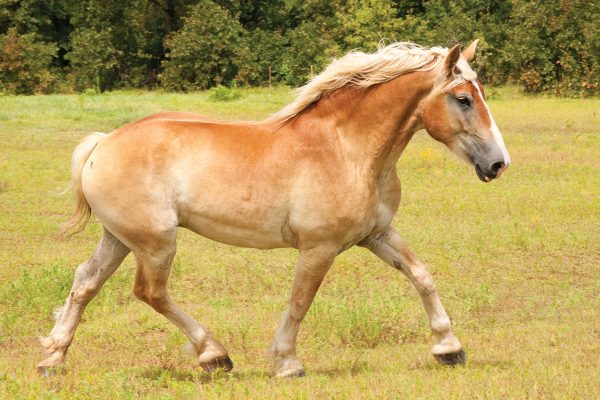
Imagine you’re working deep in a forest, harvesting logs to use as fuel or building materials. The uneven ground and sheer number of trees make it impossible to maneuver a vehicle. How will you pull the heavy logs out of the forest? Surprise—you can do it without heavy machinery! Because in this story, you own a pair of lovely Belgian draft horses that love to work and are only too happy to lean into their harnesses and pull the load for you. They’re extremely strong, but also calm and sensible.
Bred to Work
While some Belgian horses may work in the forest like this, many others are found working on farms, pulling wagons and plowing. In certain regions of Europe where the breed originated, Belgians are especially popular as farm horses, doing the work of tractors in soils that are too fragile to support large machinery.
In some parts of New England, Belgian horses spend time each spring pulling the (very heavy!) loads of maple sap to “sugar shacks” to make maple syrup.
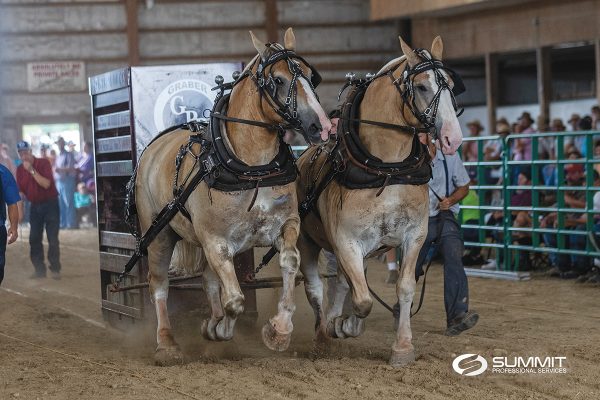
Belgians are also used for draft driving competitions and weight-pulling events, and even compete in ridden classes at shows. These are hardworking horses, indeed!
Enormous Equines
So how are Belgians able to perform all of these demanding jobs? The secret lies partly in their impressive size, and partly in their impressive strength.
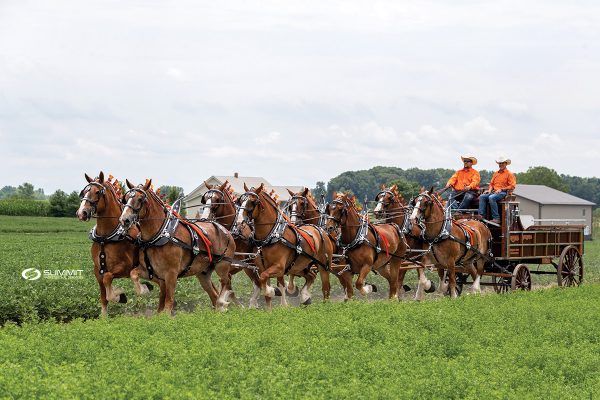
Belgians are super-large horses, sometimes standing as tall as 18 hands—that’s 6 feet—at the withers. They have impressive bone and, in general, massive overall substance. They’re muscular with strong shoulders and hindquarters.
Going along with these great proportions is the breed’s weight—some within this breed reach 2,400 pounds—that’s more than 1 U.S. ton, and double an average horse’s weight. About the only thing small about the Belgian draft is their heads, which tend to be a bit smaller than you might expect.
But like many other draft horses, the Belgian is usually a gentle giant, with an obedient and quiet personality that may surprise non-horse people. Many modern Belgians in the U.S. sport chestnut or sorrel colorings, often with a white face and leg markings. Other colors include bay, black, and various shades of roaning.
Genealogy
How did Belgians achieve the size to perform all of these demanding jobs? It’s easy—they were bred for it.
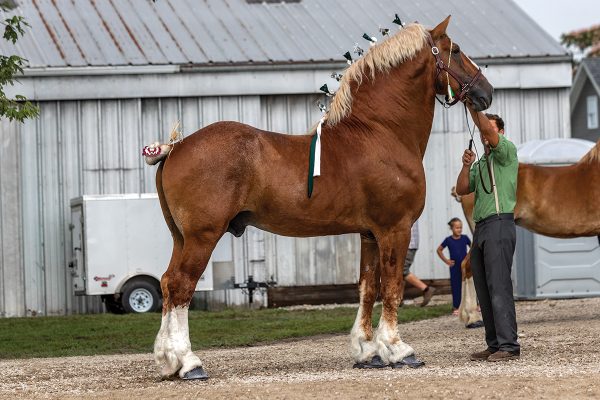
While it’s difficult to know just how the original breeding stock arose, farmers in the European country of Belgium developed the breed over centuries. In fact, the Belgian is the oldest draft horse breed you’ll find.
In addition to its uses as a draft horse, the Belgian was historically used as a war horse, too; William the Conqueror rode a very old ancestor of the breed in the 11th century, and Belgian horses were even used in wars as recently as the 1940s. In their native country, Belgians are known as Brabants.
Go Further
You might not have the chance to meet a Belgian draft horse at your local riding stable full of Quarter Horses, Thoroughbreds, and Arabians, but if you attend certain driving or weight-pulling events, or county and state fairs, you might be able to watch Belgians in action.
The breed’s U.S. registry, the Belgian Draft Horse Corporation of America, offers lots of information for anyone looking to learn more about the breed at www.belgiancorp.com. Their Belgian Draft Horse Alliance, Inc., has developed a Youth Ambassadors program for ages 13 to 18. And if you have any interest in getting into driving, farming, or weight pulling with horses, the Belgian is a fine breed to start exploring.
Who knows? Maybe someday you’ll run a farm powered by a pair of environmentally friendly—not to mention just plain friendly—Belgian draft horses.
What is the Brabant?
American Brabant
The American Brabant is a breed of working horse ideally suited for field and forest work as well as pleasure driving. The American Brabant has been in development since the late 1970s. American Brabants are a medium-sized calm, willing work horse that stands 15.2 to 17 hands high and weighs about 1,800 pounds, with good but not excessive bone. Their steady disposition coupled with moderate size also makes them suitable for riding as well as harness work.
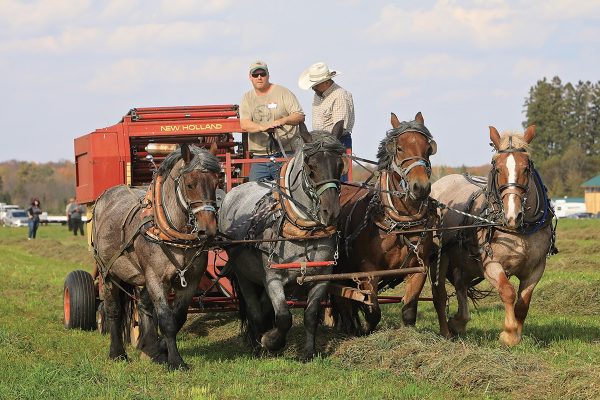
The American Brabant is a work in progress. American Brabants are a cross between the modern European Belgian Brabant and several other draft breeds, including old-type Percherons, American Belgians—particularly smaller pulling horses—and Suffolk Punches. American Brabants have the mind, build and stamina to work daily along with you. They are ideal for the family farm or ranch.
The American Brabant Association has a website and Facebook page. You don’t need to own an American Brabant to join the fun!
European Brabant
“The European (Belgian) Brabant is an ancient breed that has seen the rise and fall of the Roman Empire, carried medieval knights into battle, plowed farmer’s fields throughout Europe, narrowly survived two World Wars and went on to found countless breeds around the world, including the American Belgian and American Brabant,” explains Stacy Pearsall, President of the European Brabant Registry of America (EBRA). “The EBRA’s main mission is to preserve this rare, heritage breed so generations to come may continue to enjoy their incredibly loving dispositions and awe-inspiringly powerful presence.”
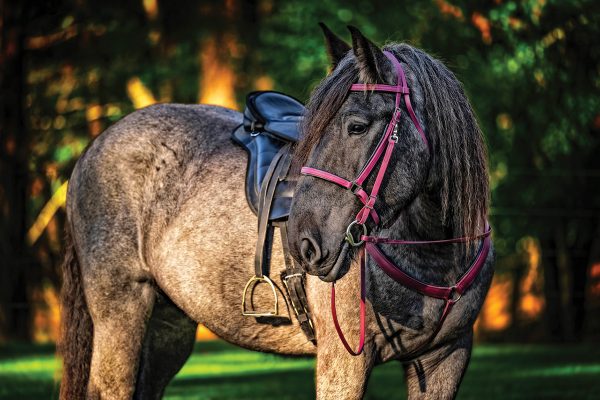
Though there are only an estimated 10,000 purebred European Brabants in Belgium and less than 75 in the U.S. and Canada today, you can find them in a variety of equine activities from competitive riding and driving classes to vaulting and jousting events. Because of their calm, sweet temperaments, many work as school and therapy horses. They’re also very strong and help in numerous green, sustainable logging and farming operations. No matter their handler’s discipline of choice, they love their humans and aim to please. They have a ton of heart and ceaseless love.
Join the European Brabant Registry of America and help safeguard this precious breed. All are welcome!
This article about the Belgian horse breed appeared in the Winter 2022 issue of Young Rider magazine. Click here to subscribe!


